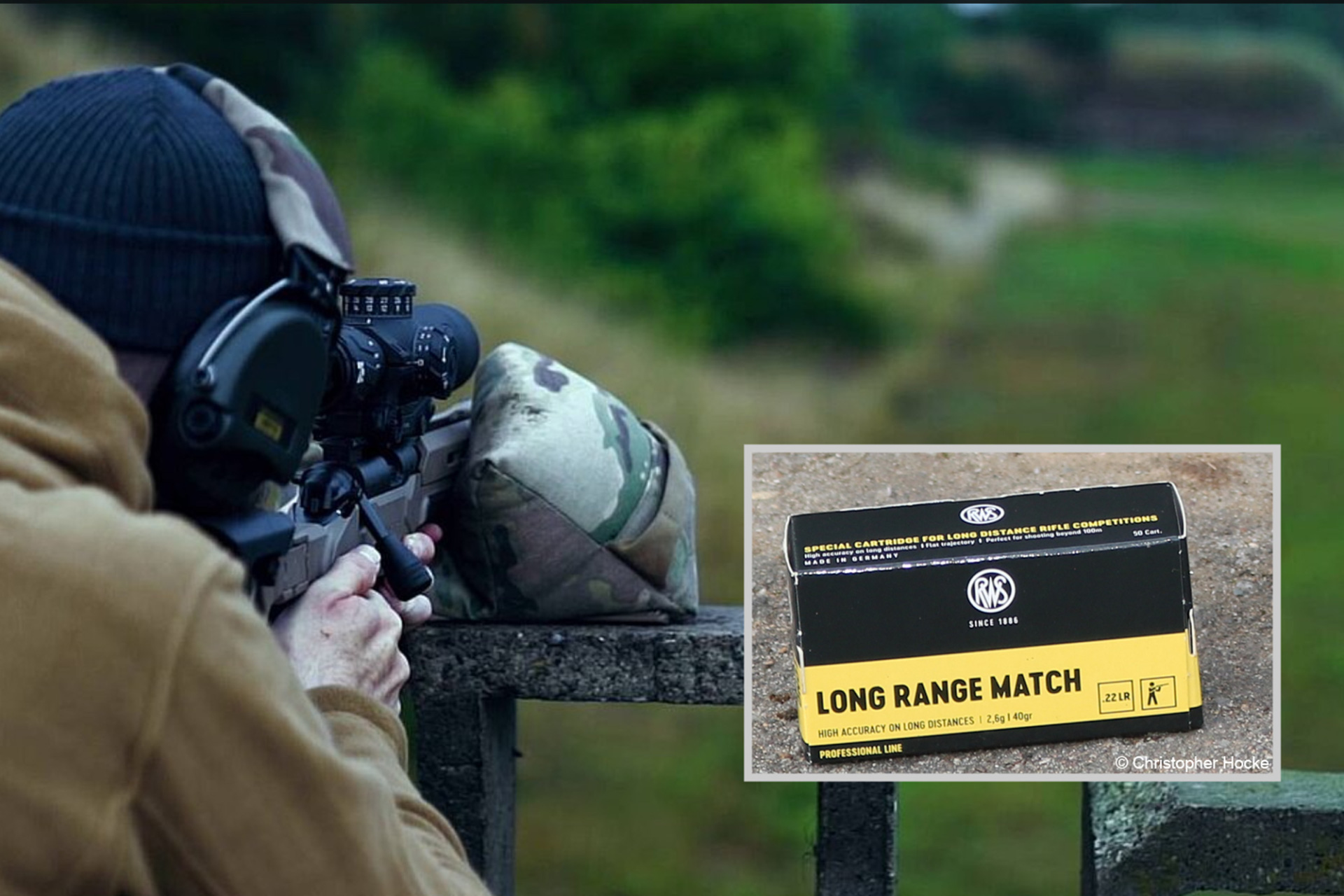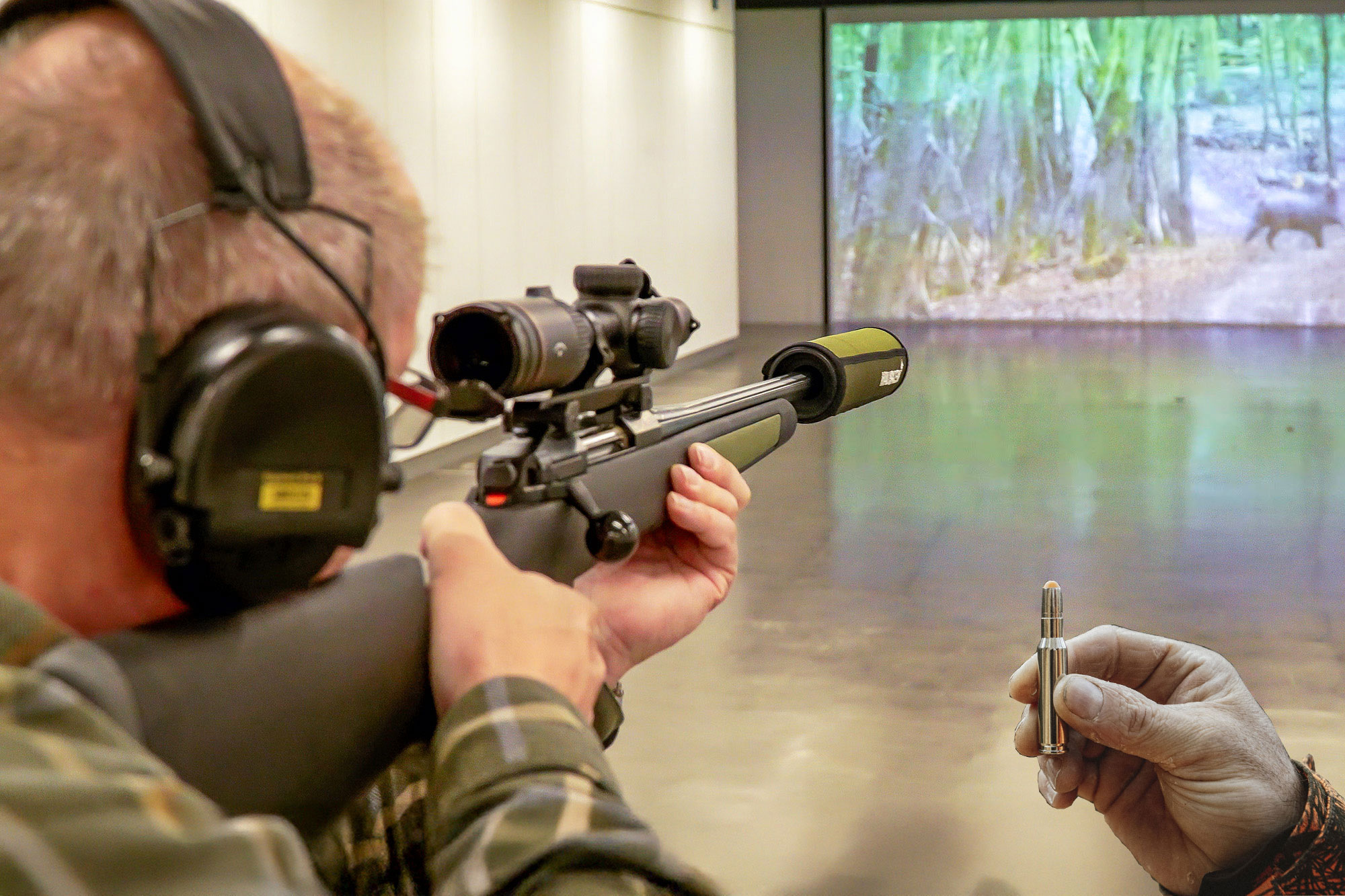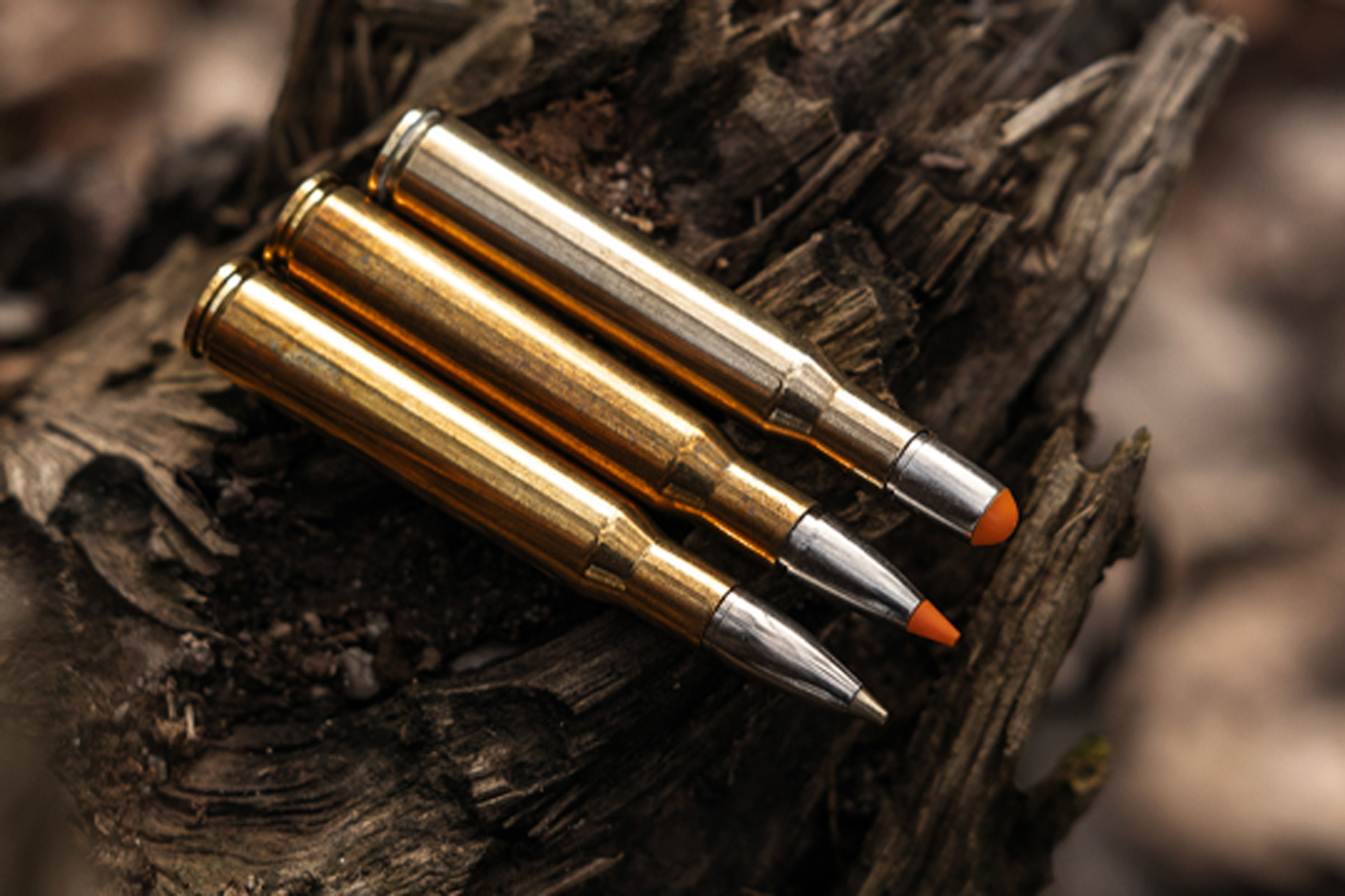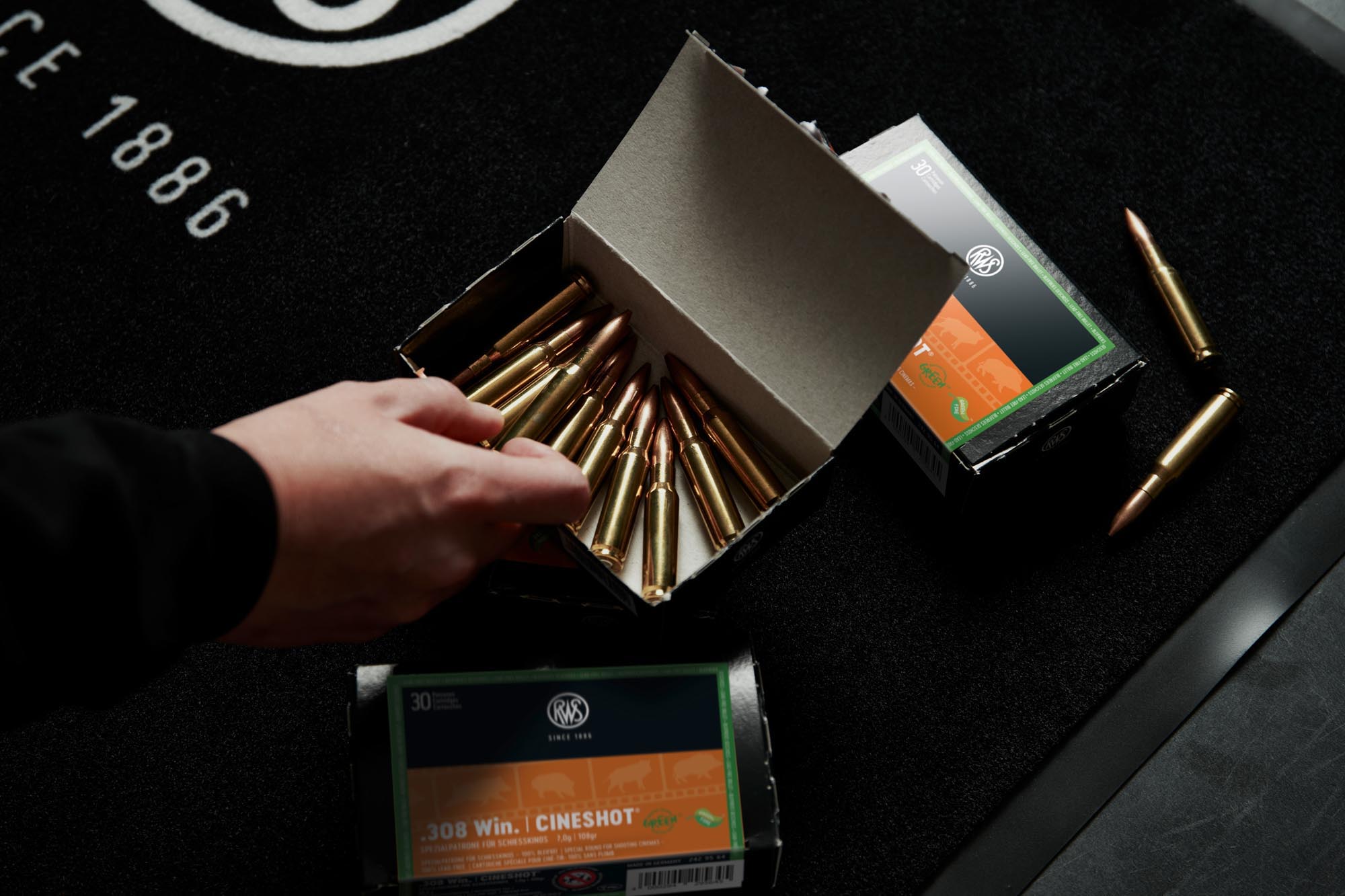"Imagine shooting with a machine gun at a flying target the size of a shoe box that is hovering 80 meters away from you at a height of 20 meters. The bullets from your weapon endanger the entire surrounding area!" This is how Dr Florian Pfaff, Director of Product Management & R&D at RWS GmbH, illustrates the problem. The danger zone of a full metal jacket soft-core bullet from a 7.62x51mm weapon can be up to 5,000 meters. "Shooting at a drone with service ammunition is only really justifiable directly at the front line, when the fire direction is towards the enemy," continues Pfaff. However, due to the high mobility of these small drones, even this is problematic. If the weapon follows the target, the bullets can easily land on friendly troops. In densely populated urban areas, firing into the air would actually be unacceptable. It is too easy for people to be injured or infrastructure damaged by falling projectiles.
The request was therefore simple: the aim was to develop an effective means of shooting down small drones, even in densely populated urban areas, without unnecessarily endangering the surrounding area. Or to put it another way: high effectiveness, but only at short range.
First thoughts on the drone defense cartridge at RWS
RWS initially had a number of different ideas. "As a manufacturer of ammunition for hunting and shooting sports, our focus almost inevitably turned to shotgun cartridges," reveals Pfaff. However, the ratio of effective range to danger zone was not convincing. A shotgun shot with the cartridges known to date would only be effective against a small drone at a maximum distance of 80 meters – the danger zone would, however, would extend to several hundred meters, depending on the size of the shot used. Other ideas focused on a projectile that self-disintegrated after a defined flight time.
But the solution was actually already at hand. For decades, RWS has had a product that essentially fulfils the requirements mentioned – the plastic training cartridge.
History of the blue 7.62x51mm training cartridge for the German Armed Forces
Let's take a leap back in time – right into the middle of the Cold War. Into a German Federal Republic in which military training grounds were only available to a limited extent and were also heavily occupied by foreign stationing forces.

The German Armed Forces (Bundeswehr) wanted a training cartridge with a greatly reduced danger zone compared to service cartridges. After using rimfire rifles for shooting training in the early days, they initially switched to rimfire adapters for the G3 rifle. However, the new cartridge – at least in conjunction with a training system – was intended to enable shooting training with the operational weapons while causing as little damage as possible to target structures. The training cartridge with polymer projectile then developed by the company known at the time as Dynamit Nobel was introduced to the Bundeswehr as a 7.62x51 DM18 training cartridge and was used with the G3 rifle for training on the so-called Waldkampfbahn (forest fighting training facility). It was also used with the MG3 machine gun on a tripod for training in anti-aircraft fire. Weighing just 0.7 grams, but traveling at 1,200 meters per second at the muzzle, the polymer projectile of the training cartridge has enough kinetic energy to knock over popper targets or burst balloons at short range. However, due to its extremely low sectional density, it quickly loses speed and therefore energy. The danger zone shrinks to 400 meters – shots at flying targets are possible.
The new Urban Drone Defence Heavy and Light anti-drone cartridges from RWS with a reduced danger zone

The 7.62x51 UDD cartridge, which was presented for the first time at the Enforce Tac 2025, builds on this concept. However, it is a completely new development – the only thing it has in common with the previous training cartridge is the idea. In the training cartridge, the bullet and case are injection-molded in one piece from blue-colored plastic. The metal cartridge head is inserted separately. When fired, the bullet separates from the case at a defined point. The bullet is therefore also slightly shorter than that of the service cartridge.

The UDD does not follow this technical approach. Here, the bullet is made from a modern polymer and is classically inserted into a brass cartridge case. What they do have in common is the extremely low weight of the bullet and the high muzzle velocity. The UDD cartridge is currently available with two different bullets. The "Light" version has a bullet weight of around one gram, while the "Heavy" version weighs three grams. The UDD Light is already listed in the RWS military and LE catalog. The muzzle velocity is up to 1,300 meters per second. This results in an effective range of up to 120 meters for the UDD Light, with a danger zone of up to 500 meters. With the UDD-Heavy , the effective range increases to up to 400 meters, combined with a danger zone of up to 1,300 meters.
Variants of the UDD with a tracer projectile are also currently in preparation in order to be able to guide shots safely into the target.
The UDD can be fired from all 7.62x51 firearms. A training adapter is required for automatic weapons to ensure cycling. The cartridge shows good accuracy at 50 to 80 meters, so that it can also be used for training.

To defend against drones, however, UDD cartridges are ideally fired from a fully automatic weapon with a high rate of fire. "With a rate of fire of 3,000 rounds per minute, the Bundeswehr's MG6 offers the best conditions for use in drone defense," explains RWS development manager Pfaff. Because when firing at flying targets, the principle that is otherwise generally questionable applies: more is better!
Further information on the cartridge reserved for military and government agencies can be found on the RWS GmbH UDD product page.
Here you can find a manufacturer's video on the RWS UDD with example scenarios from drone defence.










